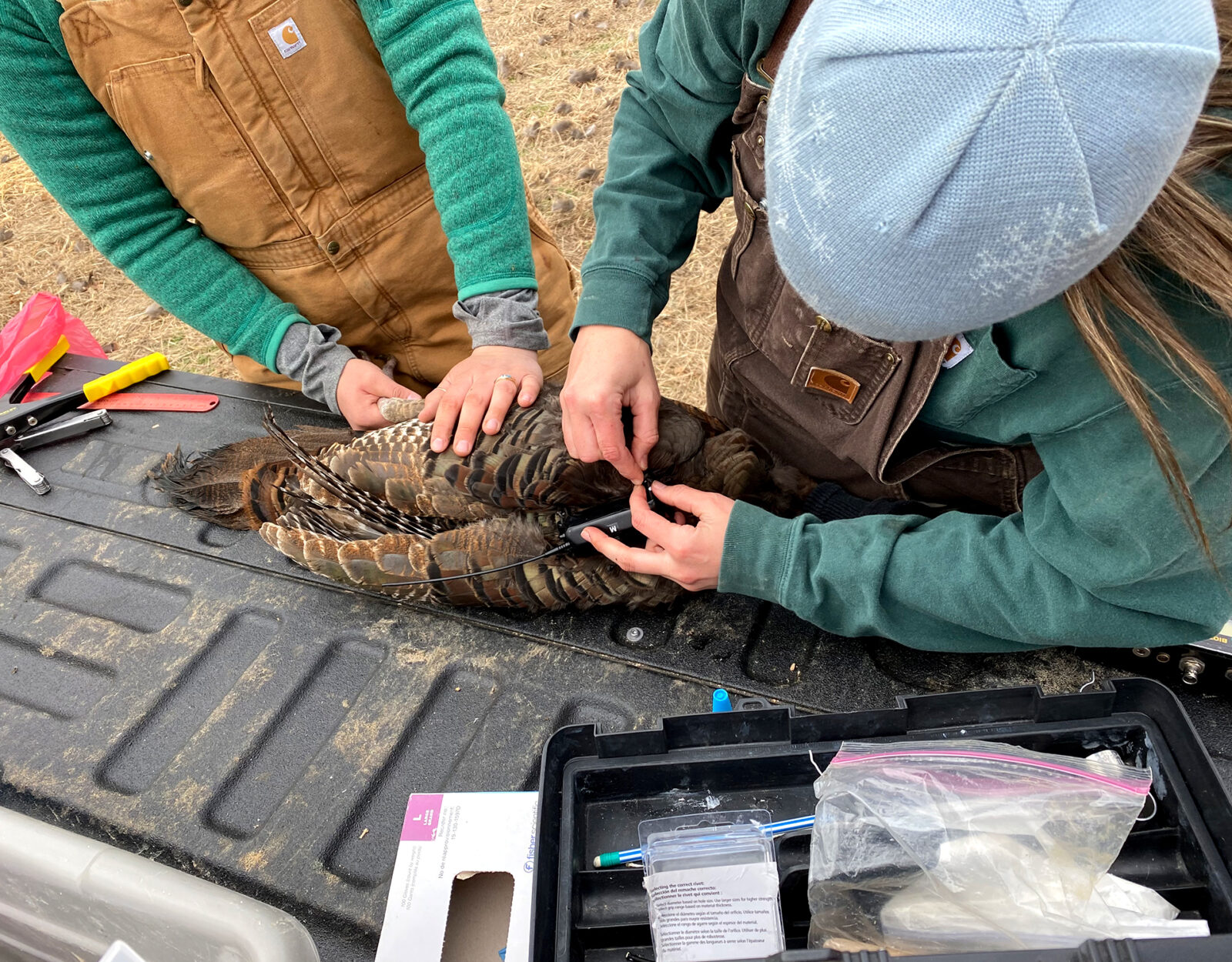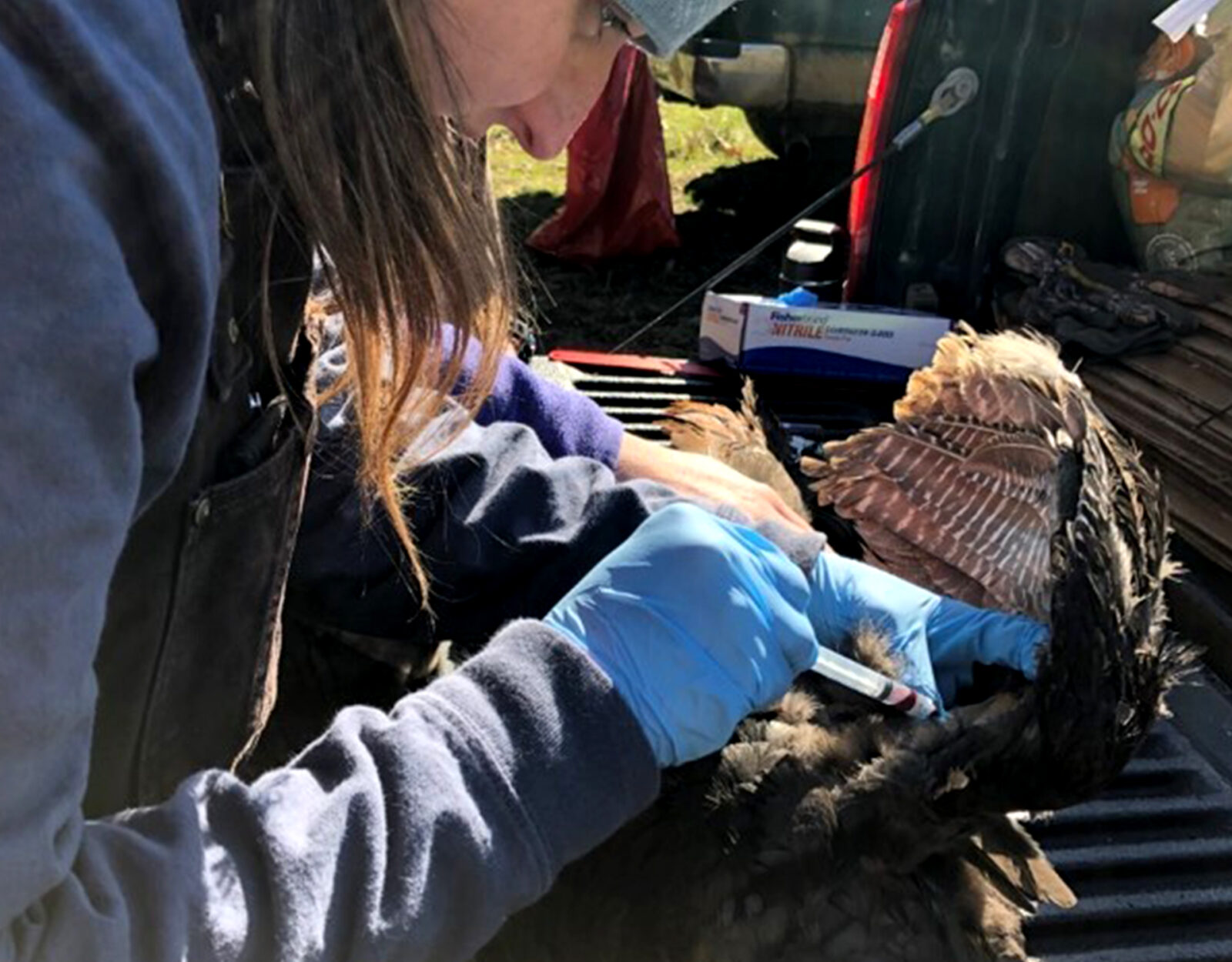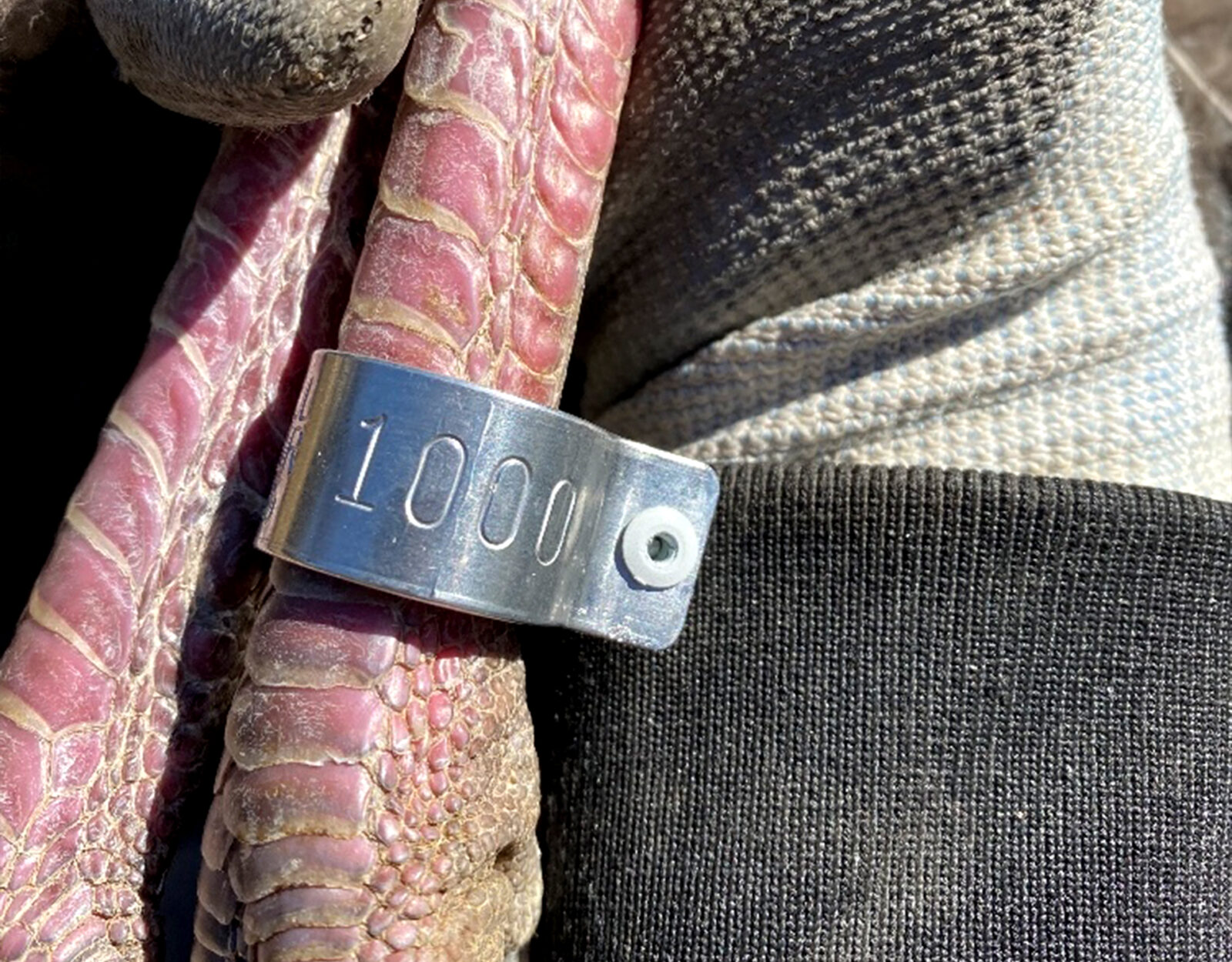Why are turkey populations in many states around the country suddenly in severe decline? One organization is doing all it can to find out what’s behind their decimation.
“There is no one answer,” says Turkeys For Tomorrow’s Director of Development Chase Grubbs. “It’s really like death by a million cuts. There’s no smoking gun to point to and we don’t yet know what’s going on.” If anything, the research at this point is uncovering more questions than answers.

Turkeys for Tomorrow
Turkeys For Tomorrow (TFT) is a new organization supporting and funding research that aims to get those answers. As a group formed only a handful of years ago by 14 veteran turkey hunters who were concerned about the decline of wild turkeys in areas they hunted, they dedicated themselves to improving turkey populations for future generations.
The single goal of TFT is to help reverse the downward trend in wild turkey populations across the United States. The organization is doing this through sound research and funding professionals willing and able to answer those questions and implement practices that could reverse what’s being seen in wild turkey populations.
The places that TFT is seeking those answers are in Alabama, Kentucky, Tennessee, and Mississippi, with the possibility of adding Iowa and Texas in the near future. In those states, TFT is supporting leading researchers and projects that consider every contributing factor that might be harming wild turkey populations, including predation, habitat loss, habitat degradation, disease, hunting pressure, and even political issues or concerns.
The first TFT research project launched in Alabama, where researchers have been GPS-tracking turkeys to better understand where they nest, roost, and feed, and to discover what challenges they encounter along the way.
This was also where onX Hunt could lend a hand. “A turkey doesn’t know where a property line is,” says Grubbs, “but we had to be within a certain distance of these tracked turkeys to get their GPS data, which we’d download every few days. It was difficult before we had onX because our researchers were just driving around asking who owned the property the turkeys were traveling across. Now they could look up the landowner and their contact information, sometimes writing them a letter asking for permission to access their property to get close enough to the turkeys to download data. Every landowner except one let them on their land to track the turkeys.”
Another benefit of using onX Hunt was that TFT could use our maps to read the topography of an area to select the best location for placing microphones to record the turkeys. The higher and more open the spot, the more sounds the researchers could capture. Ninety such microphones were put up in Alabama alone.

Things in Tennessee are also really moving along. In 2023 TFT was able to help extend the research going on there by another year after the Tennessee Wildlife Resources Agency (TWRA) made changes to the season framework and bag limits this year. One of the goals now is to study and understand if these changes will make as big of an impact as TWRA hopes. Preliminary results are showing low poult survival primarily due to predation.
Work there is being led by Dr. Craig Harper and Dr. David Buehler, both with the University of Tennessee. Highlights of this ongoing study, in which researchers have trapped over 1,000 birds (toms and hens) and radio-tagged 99 hens, include determining hen nest success and poult survival are primary limitations in south-middle Tennessee. Drs. Harper and Buehler have not identified any disease as a limiting factor as of yet. And after measuring reproductive success for four years prior to a two-week season delay and two years after implementing a two-week season delay, in delayed and non-delayed counties, they have found no differences in productivity.
Of special note, researchers in Tennessee just recaptured a hen in Lawrence County that TFT trapped as an adult in 2017, making her at least eight years old. Dr. Harper, Dr. Buehler, and TFT have now put a third transmitter on her, and they have nesting and brooding data for her from five of the six years of their study so far (2017-2021).
What Dr. Harper is finding thus far is that the goal really is to make more birds. In terms of season start dates, moving the season dates back may limit some number of non-resident hunters from getting an early season push, but resident hunters will still take as many birds in a season regardless of when it starts.
Can We Make More Birds?
The argument in favor of making more birds was echoed by Mississippi Department of Wildlife, Fisheries and Parks’ Wild Turkey Program Coordinator Adam Butler in TFT’s new podcast, Wild Turkey Science. Butler explains that with no other game bird species are we asking how can we limit our harvest. When pheasants decline, for example, the conservation efforts start with what can be done to improve habitat and brooding sites. But with turkeys, the first suggestion often made is that hunters should shoot fewer birds in a season.

Another high-profile research project led by a high-profile scientist is what’s happening in Kentucky through work led by Dr. Mike Chamberlain, a.k.a the “Wild Turkey Doc.”
“It’s the first turkey research that’s been done in Kentucky in decades,” says Dr. Chamberlain. “It’s in response to pretty dramatic declines in harvest and observations of turkeys, particularly in the central and southwestern parts of the state which have historically been the bread-and-butter of turkey hunting in the state.”
The Kentucky Department of Fish and Wildlife invited and funded most of Dr. Chamberlain’s study, but The Hunting Public held a fundraiser to expand the study and TFT also contributed to the expansion. Now Dr. Chamberlain and his team can take the study that was at first only looking at hens and reproduction and start researching toms too. The study can also start including disease testing and genetics work. This growth will make the Kentucky study fully comparable to all of Dr. Chamberlain’s other projects around the country.
The project is just getting off the ground, with the team of researchers having just begun to trap birds to put GPS trackers on them, but the funding is in place for a three-year study with another year of wrap-up.
Kentucky is unique among other turkey study sites in the South. “There are a lot of reclaimed mines there,” says Dr. Chamberlain. “Those reclaimed mines are providing habitat for not just turkeys but a host of other species, so understanding how turkeys are doing in those reclaimed mines and landscapes is important.”
“There’s a lot of factors driving these turkey declines,” says Dr. Chamberlain. “And what may be most influential in one part of the landscape may not be as influential in another part of the landscape. But if you boil the major players down we have a loss of habitat and we have a degradation of habitat.
“We have lost acres and acres of turkey habitat in the last 20 years, and we see that what’s left is not as high quality as it was. We are also seeing predator communities that are at an all-time apex. In many ways, our landscapes are better predator habitats than they are turkey habitats. Then you factor in things that we don’t yet understand, like disease issues. Lastly, this is the only game bird in the lower 48 that we harvest during its breeding season. That matters.
“You put all these things together and understand why we need the research to understand what’s at play, what can we manage, what can’t we manage, and what do we do today to make sure we can hunt this bird sustainably 50 years down the road.”
onX continues to support TFT’s work. To learn more about TFT chapters in your region and the organization’s upcoming projects and events, visit turkeysfortomorrow.org.
Cover photo: Turkeys being trapped in Tennessee before being tagged and released back into the wild. Photo courtesy of Turkeys For Tomorrow.